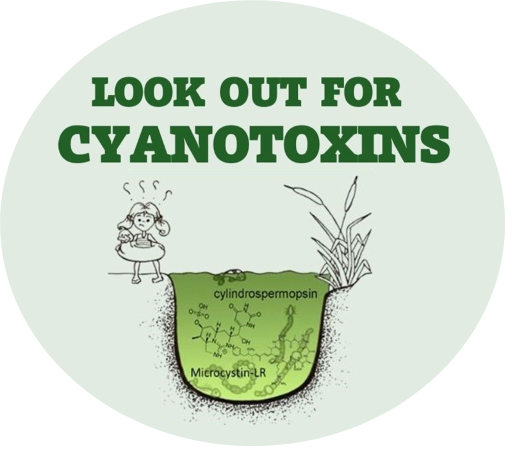Scientific background
Cyanobacteria are a group of photosynthetic bacteria inhabiting diverse aquatic freshwater, marine, and terrestrial environments. Nowadays, cyanobacterial blooms are becoming more frequent worldwide due to eutrophication caused by anthropogenic activities and climate change. Globally, the number of lakes with harmful cyanobacterial blooms is predicted to increase by at least 20% by 2050. In regions with nutrient-rich conditions, typically associated with agricultural runoff and elevated temperatures, cyanobacterial presence is most pronounced. Regions most affected by cyanobacterial blooms include North, South and Central America, the Baltic Sea in Europe, various lakes in Australia and New Zealand, and Africa. Lower incidences are seen in Asia and South America. Research up to 2018 documents 1.118 instances of significant cyanotoxins in 869 freshwater bodies across 66 countries, highlighting the need for continuous monitoring and mitigation due to the issue’s varying severity. Slovenia, known for its abundant clean underground drinking water, is facing challenges in the agriculturally dense northeast Pomurje region (areas like Gravel Pit Lutverci, Lake Radehova, Pond Borovci, Pond Laško and others; CIANOSLO, 2023). Here, increasing eutrophication is causing more frequent summer and autumn cyanobacterial blooms, turning cyanobacteria and their toxins into a rising environmental and health concern within the country.
Cyanobacterial blooms are hazardous to humans, animals, and plants due to the production of a wide range of secondary metabolites including highly toxic cyanotoxins ranging from hepatotoxins, cytotoxins, neurotoxins, dermatotoxins, and irritant compounds with diverse structural and physicochemical properties. Their ubiquity in freshwater ecosystems with increasing demands upon water resources, raises concern for the human health and animal life exposed to cyanotoxins. Humans can be exposed to these toxins by different routes, and among them, the oral route, through the intake of contaminated water and food, is the most important. Nevertheless, inhalation, dermal and parenteral exposure may also occur. Cyanotoxin ingestion has been linked to numerous cases of lethal poisonings of wildlife and livestock. Fatal or severe poisonings of humans due to acute or short-term exposure to cyanotoxins are less common, however, the persistence of repeated or chronic exposure to low concentrations of cyanotoxins is of great concern. Microcystin-LR (MC-LR) and cylindrospermopsin (CYN) are two types of cyanotoxins that are of particular concern among cyanotoxins due to their hepatotoxic properties and potential genotoxic effects. Research indicates that both are implicated in the increased incidence of cancer development, especially liver cancer but their exact mechanisms of action are still not completely known.
We are open for collaborations, if you’re interested please contact dr. Martina Štampar.
